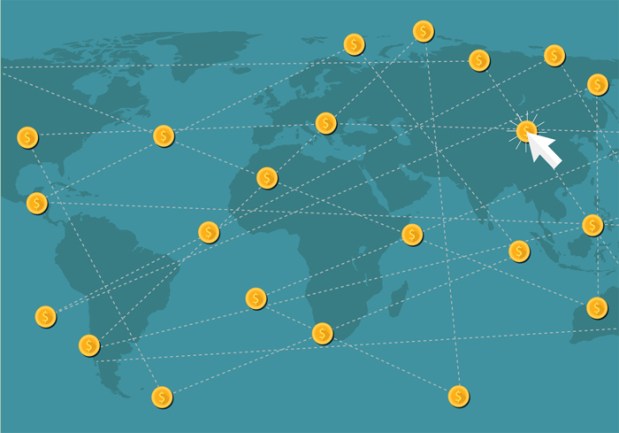For Cross-Border Payments, Speed Is Key

Cross-border payments are becoming ever more important as businesses expand their operations and customer bases. PayCommerce’s CEO sees centralized networks as critical to faster and more efficient payments.
Cross-border payments, as an industry, has a need for speed, not to mention security and reliability. PYMNTS spoke with PayCommerce’s chief executive officer, Abdul Naushad, to get a sense of how centralized networks — and PayCommerce’s recent announcement that it would work with Software AG’s Digital Business Platform — can help reduce costs and improve the overall payments experience itself.
PYMNTS: PayCommerce has said that it can reduce some costs tied to transactions by up to 80 percent. How are you able to do this?
AN: The traditional model has a lot of intermediaries, with several costs in cross-border transactions. You have the FX costs, which can be 2 percent of the total transaction, and there are wire transfer costs, too, which can be substantial. As an example, take a $5,000 transfer that goes across borders and currencies. It is possible here that with a $140 FX cost and a $35 to $40 wire transfer cost, total transaction fees can become significant.
In our case, we eliminate the intermediary, through a network that spans 72 countries, and originating banks and more than 80 banks across those countries along with acquiring institutions. Here, with PayCommerce, the FX becomes transparent, with a specific number of basis points that you pay on transactions. There is not a retail rate that you have to pay that you would see elsewhere, which would range from 150 basis points to 400 basis points, and so we are able to offer the cost savings across low-value, high-volume payments.
PYMNTS: How is it that PayCommerce can provide such a frictionless cross-border payments tool? How exactly does Software AG’s Digital Business Platform come into play to make the payments process easier, especially across currencies?
AN: The way exists now — PayCommerce is set up as infrastructure, with a hub and an API that is wrapped around that hub. As customers make their payments, they can choose the interface that they want. And as we integrate with the Software AG platform, the ability is there to use messaging, to track SKUs. There’s more ability to connect across a common functionality and to work with ISO 20022. The FX functions stream in real time, through third-party data. With SAG, through the application, messaging, FX quotes, order quotes, bidirectional communications, platforms that have multiple formats, all this now has a common structure.
PYMNTS: What types of businesses can benefit from your solution? Can businesses access your payments network directly, or do they do so through a partnering bank? Compliance screening is also a major challenge for businesses working with overseas buyers and suppliers. How does PayCommerce address this?
AN: They can access us directly if they choose. The most obvious point of friction is when there are subsidiaries in other countries, such as a large company based in the U.S. with new customers coming elsewhere. Take Tyco, for example, with hundreds of subsidiaries around the globe. Those subsidiaries may use 1,000 banks, and they all have legacy systems. They can be using Oracle, or SAP or Great Plains. But they’ll need to streamline cash management to the United States and have all the information streamlined in order to get to payments approval.
For compliance, the network, complete with SAG, has AML screening and is able to screen for regulatory and even across sanctions. This can be done upfront [before payments are made] and also using data from third parties.
PYMNTS: What trends does PayCommerce see in terms of businesses working with their overseas partners? Any geographical or industry groups that are particularly focused on global operations and thus in need of a cross-border payments solution?
AN: We focus on three buckets, with regular banks, payments service providers who sell to other companies and third parties who use our network to reach their eventual payments destinations. In terms of industries themselves, we see, increasingly, global companies such as Coca-Cola, and especially those in eCommerce or in nontraditional, digital industries, expanding their presence and reach into emerging markets and who are seeing transaction volumes growing and looking for support across disbursement, debit and collections.
PYMNTS: Blockchain technology has become a hot topic in the world of payments as a potential way to ease cross-border payments friction. What are the views of PayCommerce on this front?
AN: We’ve looked at blockchain technology, and it has a good concept in its distributable ledger. But there is a real need for a model where liquidity and efficiency and payments in real time take place, and blockchain can have a 10- to 15-minute delay. It is also not yet in the mainstream. We’ll be having an announcement soon at Money20/20 focused on making cross-border payments even faster and which will launch in 2016.
